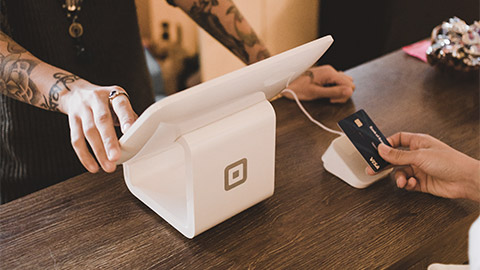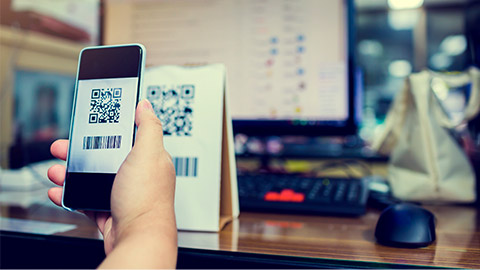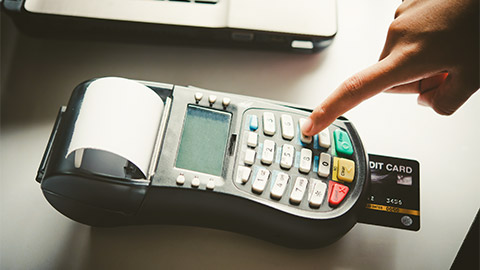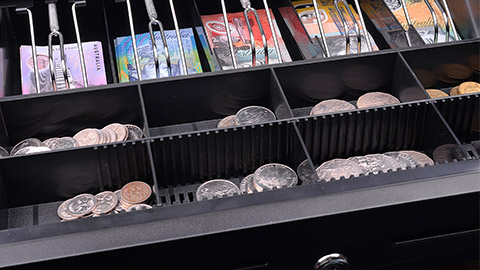Point of sale (POS) terminals are essentially computers that run specific software designed to administer a retail outlet’s transactions. Workplaces may have one or more POS terminals depending on their needs and these systems will likely comprise of the following components:
-
Touch screen.
-
Electronic funds transfer at point of sale (EFTPOS) machine/device.
-
Receipt printer.
-
Cash drawer.
-
Barcode scanner.
Cashiers operate the POS terminal by entering information into the system via the touch screen or via a barcode scanner. Each entered item will display on the POS terminal screen and tally up the running total. Additionally, the POS terminal may also be updating inventory levels, recording sales data trends, monitoring the cashier’s name and employee number and potentially recording customer purchasing history and reward points if a membership system is set up.
Each individual transaction is recorded and maintained in the system until the final daily report is run at the close of business, this is known as balancing the point of sale.
This will display all the products available for sale as well as any special promotional items or bundles (for example a two for one special). Items are often arranged alphabetically or in categories according to their use (ie. flea treatments). The cashier navigates the display to find the appropriate item and select it. Once selected and the quantity is entered the display will start to create a sub-total of items ready for purchase.

Some busy retail outlets, like pet stores, may have a bar code scanner. This device reads the barcode which is printed on the packaging of products. Each item that the store sells will have been pre-programmed into the point of sale system along with its price and other necessary information. The scanner can read this information and use it to contribute towards the sub-total displayed on the screen.

Devices that read either the magnetic strip or embedded chip of Debit or Credit cards and verify if there is enough money in the customer's account. A command is then issued to the authorising bank requesting transfer of the necessary funds. Customers can either insert, swipe or tap their cards onto the device. A Personal Identification Number (PIN) is required for transactions over $100.

These devices print the details of the EFTPOS transaction. They are not tax invoices and will not include an itemised display of goods/services purchased. Usually, two copies of each receipt are printed, one for the workplace to retain and one to be provided to the customer, however, the customer may elect to not receive their receipt in which case the second printing can be suspended.
Consumable items for EFTPOS devices and receipt printers which will need to be replaced from time to time are:
-
Thermal paper rolls.
-
Ink cartridges or ribbons.

Lockable metallic drawers which are often connected electronically to the full point of sale system. If connected then they are usually programmed to only open if a transaction has been processed, if reconciliation is occurring or a manager code has been entered. The drawer will be divided into separate trays for different notes and coins.


